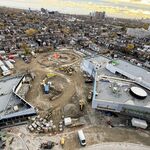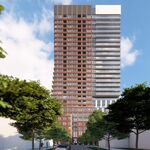King of Kensington
Senior Member
Why does TO have so many 1 or 2 census tract neighborhoods and a Wikipedia page for practically every micro-neighborhood. For example Trinity Bellwoods, Beaonsfield Village, Seaton Village, Dovercourt Park, Regal Heights, Bloor West Village etc.
This seems to be in contrast to Boston, Chicago, Vancouver, Montreal etc.
Just a large number of TO-nerds on Wikipedia and David Dunkelman's real estate guide?
This seems to be in contrast to Boston, Chicago, Vancouver, Montreal etc.
Just a large number of TO-nerds on Wikipedia and David Dunkelman's real estate guide?




